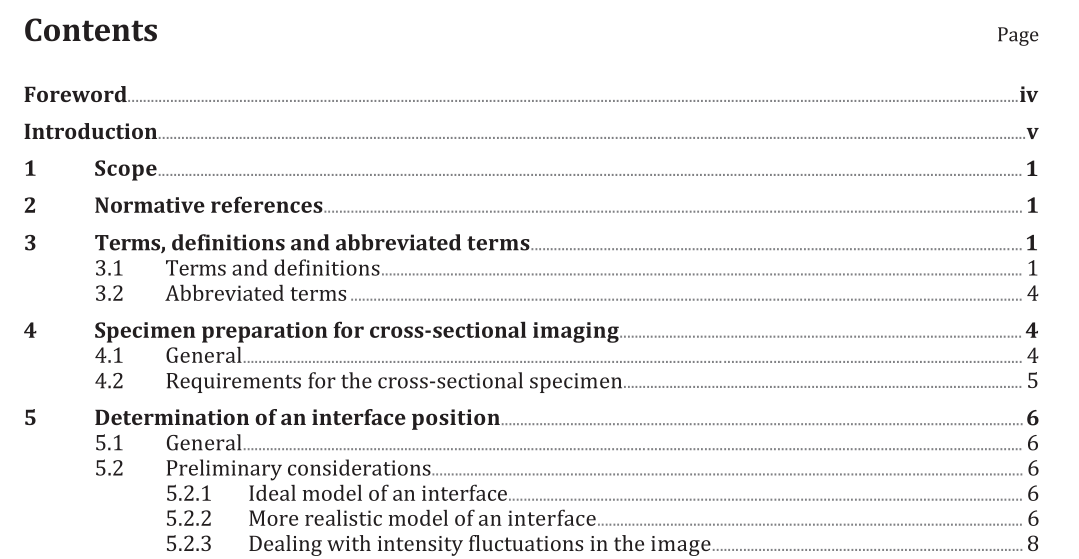BS ISO 20263:2017 pdf download.Microbeam analysis — Analytical electron microscopy — Method for the determination of interface position in the cross-sectional image of the layered materials
1 Scope
This document specifies a procedure for the determination of averaged interface position between two different layered materials recorded in the cross-sectional image of the multi-layered materials. It is not intended to determine the simulated interface of the multi-layered materials expected through the multi-slice simulation (MSS) method. This document is applicable to the cross-sectional images of the multi-layered materials recorded by using a transmission electron microscope (TEM) or a scanning transmission electron microscope (STEM) and the cross-sectional elemental mapping images by using an energy dispersive X-ray spectrometer (EDS) or an electron energy loss spectrometer (EELS). This document is also applicable to the digitized image recorded on an image sensor built into a digital camera, a digital memory set in the PC or an imaging plate and the digitalized image converted from an analogue image recorded on the photographic film by an image scanner.
2 Normative references
There are no normative references in this document.
3 Terms, definitions and abbreviated terms
3.1 Terms and definitions
For the purposes of this document, the following terms and definitions apply.
ISO and IEC maintain terminological databases for use in standardization at the following addresses:
— ISO Online browsing platform: available at https://www.iso.org/obp
— IEC Electropedia: available at http://www.electropedia.org/
3.1.1 atomic column image
TEM/STEM image recorded at atomic-resolution from a specimen along a high-symmetry crystalline orientation
Note 1 to entry: Crystalline orientation is the direction of crystal which is represented by Miller indices. During TEM imaging, it is often useful to have a crystalline specimen aligned so that a specific (low index) zone axis (3.1.26) is parallel, or near parallel, to the beam direction (optical axis).
3.1.2 cross-sectional image
TEM/STEM image of the multi-layered materials along a plane perpendicular to the stacking direction
3.1.3 differential processing
calculation of the difference between the values of adjacent pixel data in the intensity profile
5.2.3 Dealing with intensity fluctuations in the image
Unlike models described in 5.2.1 and 5.2.2, the actual cross-sectional TEM/STEM/elemental mapping image has a domain-like intensity fluctuation, background noise and sometimes (in the high-resolution images) periodic modulation of the intensity due to atomic column structures. Because of this non-uniformity in the intensity in the image, follow the steps a) to f) sequentially for obtaining the desired smooth intensity profile with a plateau and well-defined slope.
NOTE 1 Details of the actual procedure are described in Clause 6.
a) Prepare the cross-sectional TEM/STEM/elemental mapping digital image.Set the direction of the interface parallel to the y-axis of the monitor screen.
b) Set the ROI area in the image.
c) Average the intensity line profile, perpendicular to the interface (parallel to the x-axis of the monitor screen) along the interface (parallel to the y-axis of the monitor screen) in the ROI area.
BS ISO 20263:2017 pdf download
